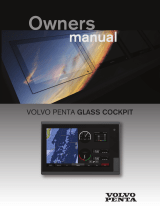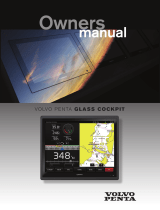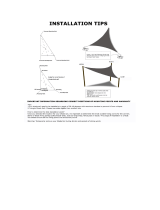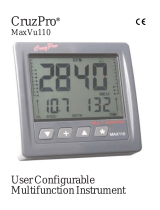
Saving a Track as a Route...................................................15
Browsing for and Navigating a Recorded Track.................. 15
Deleting a Saved Track........................................................15
Deleting All Saved Tracks.................................................... 15
Retracing the Active Track................................................... 15
Clearing the Active Track..................................................... 15
Managing the Track Log Memory During Recording........... 15
Configuring the Recording Interval of the Track Log........... 15
Boundaries................................................................................15
Creating a Boundary............................................................ 15
Converting a Route to a Boundary...................................... 15
Converting a Track to a Boundary....................................... 15
Editing a Boundary...............................................................15
Setting a Boundary Alarm.................................................... 16
Deleting a Boundary............................................................ 16
Synchronizing User Data Across the Garmin Marine
Network
.....................................................................................16
Deleting All Saved Waypoints, Routes, and Tracks................. 16
Sailing Features............................................................ 16
Setting the Vessel Type............................................................ 16
Sail Racing................................................................................16
Starting Line Guidance........................................................ 16
Setting the Starting Line.................................................. 16
Using the Starting Line Guidance................................... 16
Starting the Race Timer....................................................... 16
Stopping the Race Timer..................................................... 16
Setting the Distance between the Bow and the GPS
Antenna................................................................................16
Laylines Settings.......................................................................17
Setting the Keel Offset.............................................................. 17
Sailboat Autopilot Operation..................................................... 17
Wind Hold............................................................................ 17
Setting the Wind Hold Type............................................ 17
Engaging Wind Hold....................................................... 17
Engaging Wind Hold from Heading Hold........................ 17
Adjusting the Wind Hold Angle with the Autopilot........... 17
Tack and Gybe.....................................................................18
Tacking and Gybing from Heading Hold......................... 18
Tacking and Gybing from Wind Hold.............................. 18
Setting a Tack and Gybe Delay...................................... 18
Enabling the Gybe Inhibitor............................................. 18
Sonar Fishfinder........................................................... 18
Stopping the Transmission of Sonar Signals............................ 18
Changing the Sonar View......................................................... 18
Traditional Sonar View..............................................................18
Split-Frequency Sonar View................................................ 18
Split-Zoom Sonar View........................................................ 18
Garmin ClearVü Sonar View.....................................................18
SideVü Sonar View................................................................... 19
SideVü Scanning Technology.............................................. 19
Measuring Distance on the Sonar Screen........................... 19
Panoptix Sonar Views...............................................................19
LiveVü Down Sonar View.................................................... 19
LiveVü Forward Sonar View................................................ 19
RealVü 3D Forward Sonar View.......................................... 19
RealVü 3D Down Sonar View.............................................. 20
RealVü 3D Historical Sonar View........................................ 20
FrontVü Sonar View............................................................. 20
Selecting the Transducer Type................................................. 20
Calibrating the Compass......................................................20
Creating a Waypoint on the Sonar Screen............................... 20
Pausing the Sonar Display....................................................... 20
Viewing Sonar History.............................................................. 20
Sonar Sharing........................................................................... 20
Selecting a Sonar Source.................................................... 21
Renaming a Sonar Source...................................................21
Adjusting the Level of Detail
..................................................... 21
Adjusting the Color Intensity..................................................... 21
Sonar Recordings..................................................................... 21
Recording the Sonar Display............................................... 21
Stopping the Sonar Recording............................................. 21
Deleting a Sonar Recording................................................. 21
Playing Sonar Recordings................................................... 21
Traditional, Garmin ClearVü, and SideVü Sonar Setup........... 21
Setting the Zoom Level on the Sonar Screen...................... 22
Setting the Scroll Speed...................................................... 22
Adjusting the Range of the Depth or Width Scale............... 22
Sonar Noise Rejection Settings........................................... 22
Sonar Appearance Settings................................................. 22
Sonar Alarms....................................................................... 22
Advanced Sonar Settings.................................................... 23
Traditional, Garmin ClearVü, and SideVü Transducer
Installation Settings
.............................................................. 23
Sonar Frequencies...............................................................23
Selecting Frequencies.....................................................23
Creating a Frequency Preset.......................................... 24
Turning On the A-Scope...................................................... 24
Panoptix Sonar Setup............................................................... 24
Adjusting the RealVü Viewing Angle and Zoom Level......... 24
Adjusting the RealVü Sweep Speed.................................... 24
LiveVü Forward and FrontVü Sonar Menu.......................... 24
Setting the LiveVü and FrontVü Transducer Transmit
Angle............................................................................... 24
Setting the FrontVü Depth Alarm.................................... 24
LiveVü and FrontVü Appearance Settings........................... 24
RealVü Appearance Settings............................................... 25
Panoptix Transducer Installation Settings........................... 25
Setting the Bow Offset.................................................... 25
Radar............................................................................. 25
Changing the Radar Mode....................................................... 25
Transmitting Radar Signals...................................................... 25
Stopping the Transmission of Radar Signals....................... 26
Setting Up the Timed Transmit Mode.................................. 26
Enabling and Adjusting a Radar No Transmit Zone............ 26
Adjusting the Radar Range...................................................... 26
Tips for Selecting a Radar Range........................................ 26
Marking a Waypoint on the Radar Screen................................ 26
MotionScope™ Doppler Radar Technology............................. 26
Enabling a Guard Zone............................................................ 26
Defining a Circular Guard Zone........................................... 26
Defining a Partial Guard Zone............................................. 26
Disabling a Guard Zone....................................................... 27
MARPA..................................................................................... 27
MARPA Targeting Symbols................................................. 27
Assigning a MARPA Tag to an Object................................. 27
Removing a MARPA Tag from a Targeted Object............... 27
Viewing Information about a MARPA-tagged Object........... 27
Viewing a List of AIS and MARPA Threats.......................... 27
Showing AIS Vessels on the Radar Screen........................ 27
VRM and EBL...................................................................... 27
Showing the VRM and the EBL...................................... 27
Adjusting the VRM and the EBL..................................... 27
Measuring the Range and Bearing to a Target Object... 27
Radar Overlay...........................................................................28
Radar Overlay and Chart Data Alignment........................... 28
Echo Trails................................................................................ 28
Turning on Echo Trails......................................................... 28
Adjusting the Length of the Echo Trails............................... 28
Clearing the Echo Trails.......................................................28
Optimizing the Radar Display................................................... 28
Radar Gain and Clutter........................................................ 28
Adjusting Gain on the Radar Screen Automatically........ 28
ii Table of Contents
























